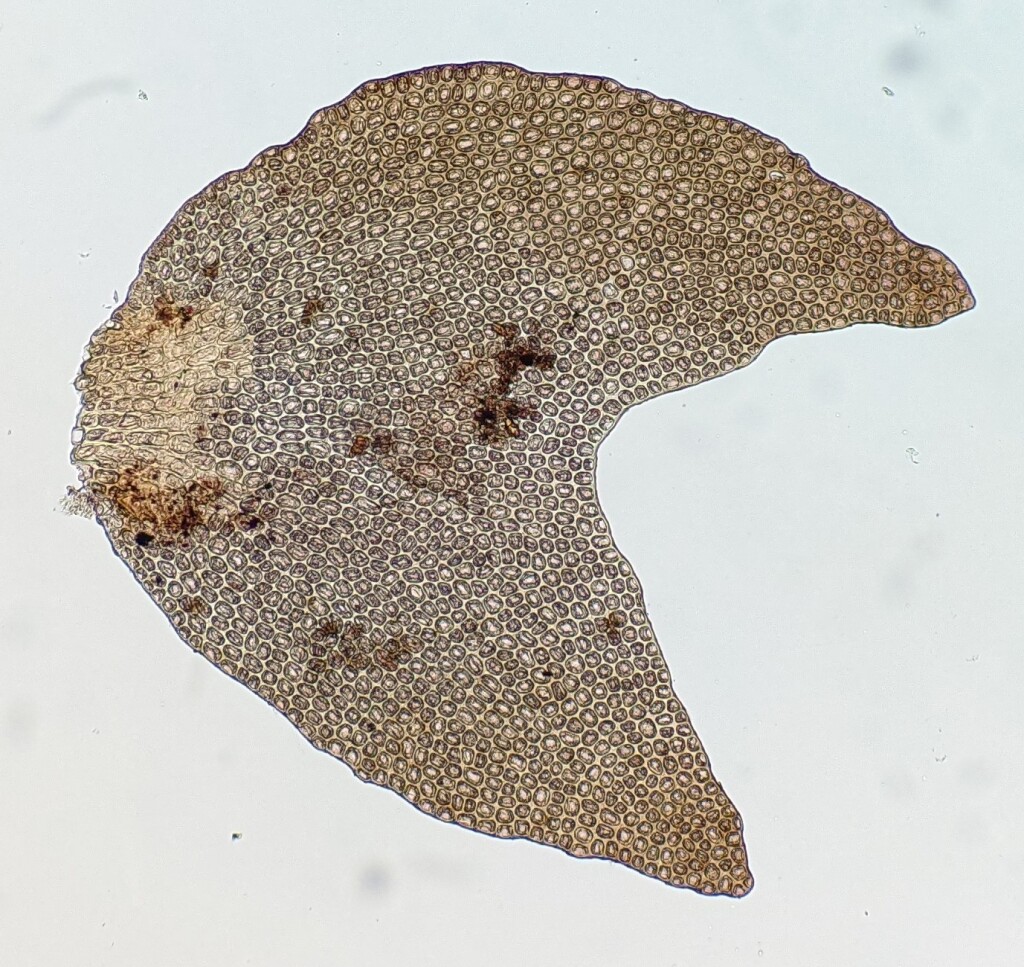Allisoniella
Terrestrial or lithophytic, usually in streams or pools, autoecious (not in Victoria) or dioicous. Asexual reproduction by 2-celled gemmae produced on leaf margins. Stems with two ranks of lateral leaves, without underleaves except in and near gynoecia, differentiated into irregularly and sparingly branched erect or ascending leafy axes and copiously branched leafless or microphyllous creeping stolon-like axes; branches emerging from main stem abaxially and with a collar of tissue at base or rarely emerging from main stem among lateral leaves and without a collar of tissue at base (not in Victoria). Leaves quadrate, orbicular-quadrate or trapezoid in outline, shallowly (not in Victoria) to deeply bifid, transverse, imbricate to contiguous toward stem apex, becoming larger toward stem apex, whitish-green (not in Victoria) or chestnut to purplish-brown and collectively appearing blackish; lobes ovate to lanceolate, often widely divergent, abaxially concave or plane, broadly rounded to acute at apex, with entire and plane or reflexed margins. Leaf cells rounded-quadrate, oblong or elliptic, smooth to papillose, thick-walled, without trigones, with 1–4 oil bodies; oil bodies homogenous, ovoid or ellipsoid, colourless. Rhizoids confined to stolon-like branches and bases of erect stems, scattered, hyaline. Androecia on main stem or long branches, with 8–14 leaflike but more basally concave bracts, each with a single antheridium. Sporophytes terminal on main stem or terminal on elongated branches, surrounded by a perianth; perianth oblong to cylindric, deeply 4–6-plicate, with denticulate (not in Victoria) to crenulate and often obscurely lobed at mouth; capsule ellipsoid or ovoid (not in Victoria), 2–4-stratose; elaters bispiral. Spores smooth to verrucose.
Five species, two endemic to New Zealand, one endemic to Tasmania, one endemic to Chile, and one species, A. nigra (Rodway) R.M.Schust. in Victoria, Tasmania and New Zealand (Schuster 1971).
Schuster, R.M. (1971). Studies on Cephaloziellaceae. Nova Hedwigia 22: 121–265.
 Spinning
Spinning